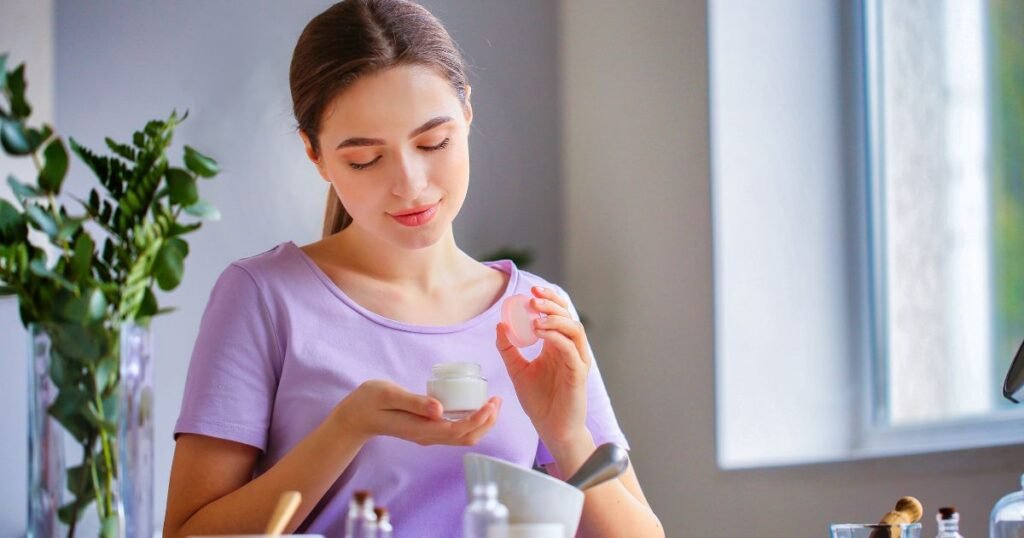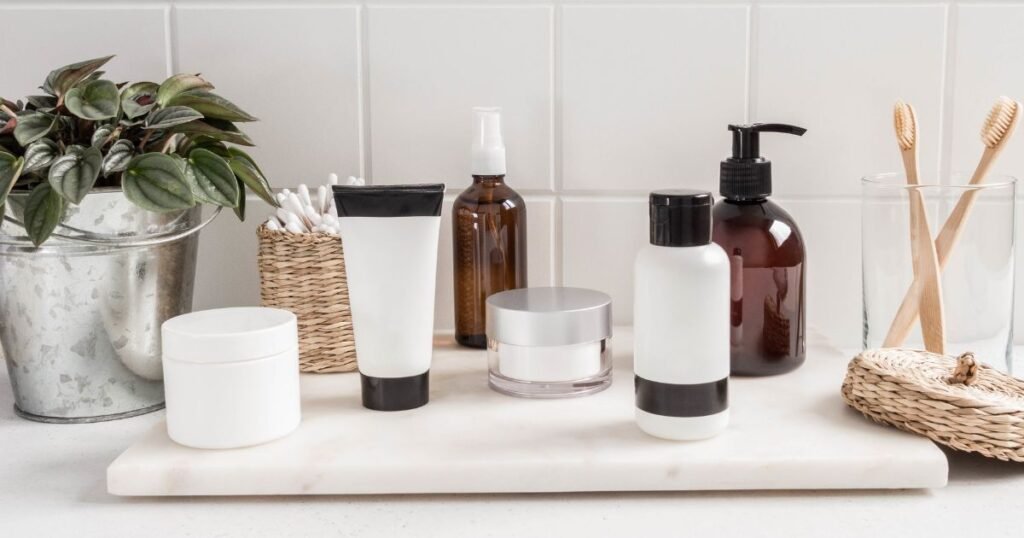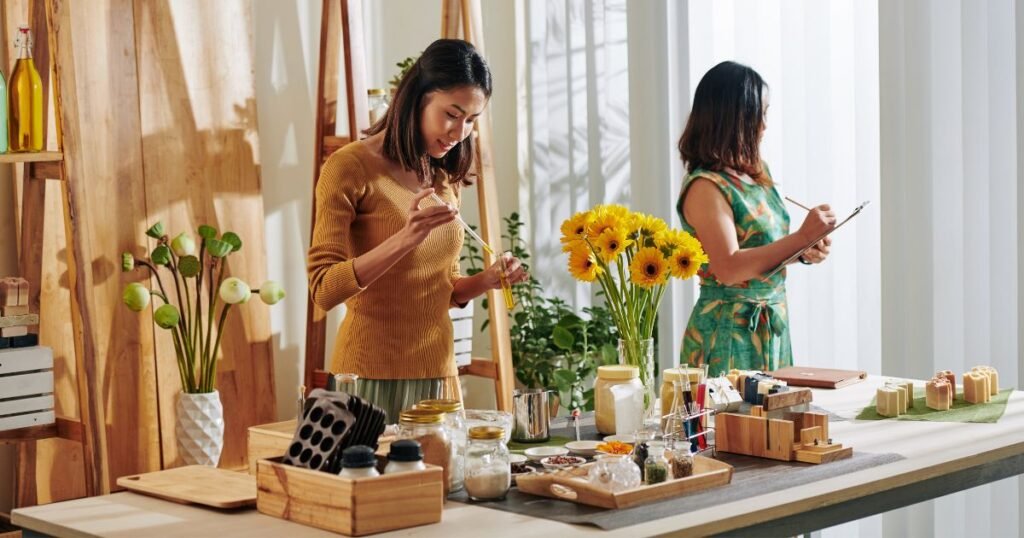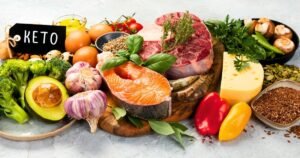Last Updated on 9 April 2024
Skincare is an essential part of our daily routine, but with so many products in the market, it can be challenging to find the right ones for our needs. Many commercial skincare products contain harsh additives, artificial colors, and questionable ingredients that may not suit our skin. This is where homemade skincare products come in. By making your skincare products at home, you have control over the ingredients you use, ensuring they are natural, safe, and tailored to your skin type. Plus, it can be a fun and creative way to care for your skin.
Homemade skincare has been a practice in many cultures across the globe for centuries. In recent years, the trend of making homemade skincare products has gained popularity, especially with the rise of the green beauty movement. People are now more conscious of what they put on their skin and seek natural alternatives to commercial products.
Making your skincare products allows you to customize the formulations for your specific skin needs and gives you a sense of satisfaction and empowerment. You can choose ingredients known to be beneficial for your skin, such as vitamin E and tea tree oil, and experiment with different combinations to create the perfect skincare routine for yourself.
In this beginner’s guide, we will explore the basics of homemade skincare, the benefits of making your products, key ingredients to know, how to make skincare products at home, how to set up your skincare-making space, the essential tools and equipment you’ll need, including DIY skin care tools, and step-by-step recipes to get you started on your DIY skincare journey. Whether you’re a skincare enthusiast or looking to switch to natural beauty products, this guide will provide all the information you need to make your skincare products at home.
- Understanding the Basics of Homemade Skincare
- How to Make Skincare Products at Home
- Beginner’s Guide to Formulating Skincare Products
- Step-by-Step Recipes to Get You Started
- Advanced Techniques for Making Creams and Lotions At Home
- Packaging and Storing Your Skincare Products
- Troubleshooting Common Skincare Formulation Issues
- Frequently Asked Questions
Understanding the Basics of Homemade Skincare
Skincare enthusiasts are increasingly drawn to the idea of crafting homemade skincare products. Understanding the basics of homemade skincare sets the foundation for creating personalized beauty solutions tailored to individual needs. From selecting ingredients like vitamin E and shea butter to catering recipes to specific skin types, homemade skincare allows for a natural approach to beauty care. Experimenting with small amounts of key components, such as tea tree oil or aloe vera gel, provides a great way to achieve better results while ensuring the end product’s quality and integrity.
The Benefits of Making Your Own Skincare Products
Creating your homemade skincare products brings a host of advantages. Firstly, you have complete control over what goes into them, ensuring only the best natural ingredients touch your skin. Tailoring formulations to your skin type can yield remarkable results you won’t find in commercial products. Additionally, it’s a cost-effective way to indulge in quality skincare. Experimenting with different ingredients allows you to customize recipes effectively, addressing specific skin concerns. Above all, the satisfaction of crafting your natural beauty products is gratifying. Embrace the joy of making your skincare products at home and enjoy the benefits of using homemade products on your skin.
How to Make Skincare Products at Home
Setting the stage for your homemade skincare venture involves establishing a dedicated workspace. As a beginner, acquiring essential tools and equipment like measuring spoons, mixing bowls, and a mini digital scale is crucial. Designate a clean and organized area in your home where you can easily focus on formulating. Ensuring proper lighting and ventilation creates an ideal environment for your skincare experiments. This preparation sets the tone for a smooth and enjoyable skincare-making experience, allowing you to confidently delve into DIY beauty products.

Essential Tools and Equipment for Beginners
Having the right tools and equipment is critical for homemade skincare. As a beginner, your essentials include a kitchen scale for precise measurements, glass or stainless steel mixing bowls, and spatulas for blending ingredients smoothly. Invest in a thermometer to monitor temperatures accurately and ensure your skincare formulations turn out right. High-quality amber glass jars or bottles for storage will help preserve your creations effectively. These essential tools set you up to successfully craft your skincare products from the comfort of your home.
Setting Up a Clean and Safe Workspace
When setting up your workspace for creating homemade skincare products, prioritize cleanliness and safety. Ensure your work area is free from clutter to prevent accidents and contamination. Use designated tools and containers solely for skincare formulations to avoid cross-contamination. Regularly sanitize your equipment and work surfaces to maintain a hygienic environment. Keep all ingredients properly labeled and stored in a cool, dry place away from direct sunlight. Establishing these simple protocols allows you to enjoy a safe and efficient skincare-making process at home.
Beginner’s Guide to Formulating Skincare Products
Formulating your products can be both exciting and rewarding when diving into the world of homemade skincare. To kickstart your journey, select core ingredients tailored to your skin type. Understanding the basics of organic skincare formulation involves measuring and mixing ingredients correctly. Customizing recipes with simple ingredients like vitamin E and tea tree oil can yield fantastic results. Experiment with different ingredients for unique formulations that suit your needs.
Understanding key ingredients is crucial when delving into homemade skincare products. Opt for versatile components like vitamin E, known for its antioxidant properties. Ingredients like shea butter and avocado oil can provide deep hydration, while aloe vera gel soothes and calms the skin. Consider essential oils such as tea tree for their antimicrobial benefits. Remember, each ingredient serves a specific purpose for various skin types. Balancing these elements ensures effective and safe skincare formulations.
Step 1: Selecting Your Core Ingredients
Selecting the right core ingredients is crucial for creating your homemade skincare products. Consider your skin type and specific needs when choosing ingredients. For example, vitamin E is known for its antioxidant properties, and tea tree oil is used for acne-prone skin. Shea butter and coconut oil provide hydration, while green tea and aloe vera have soothing effects. Experiment with different carrier oils, like jojoba or almond oil, for their nourishing benefits. Don’t forget to include cocoa butter, known for its moisturizing and anti-inflammatory properties. Each ingredient plays a unique role, so understanding their properties is essential in formulating effective and personalized skincare products for your natural beauty regimen.
Step 2: Measuring and Mixing Basics
This step is where precision meets creativity in your homemade skincare journey. Accurate measurements ensure the potency and effectiveness of your formulations. Invest in a digital scale for precise measuring, especially for small amounts like essential oils and active ingredients. Stirring tools like glass rods or small whisks help the mixing process, ensuring all ingredients are well incorporated. Remember, mixing too vigorously can introduce air bubbles. So, opt for gentle but thorough blending to maintain the integrity of your DIY skincare creations.
Step 3: Customizing Recipes for Your Skin Type
When customizing recipes for your skin type, consider your skin’s specific needs. Whether you have dry skin longing for moisture or oily skin requiring balance, tailoring ingredients is critical. Opt for hydrating elements like shea butter or almond oil for dry skin. Those with oily skin may benefit from lighter ingredients such as tea tree oil or witch hazel. Sensitive skin types should aim for gentle components like aloe vera gel. Understanding your skin type ensures your homemade skin care products work harmoniously to enhance your natural beauty. Have fun experimenting and finding what suits you best!
Step-by-Step Recipes to Get You Started
Crafting natural skincare products is an exciting journey. Here are some simple recipes for beginners to kickstart your DIY skincare adventure.
Creating your first homemade facial cleanser is a fantastic way to start. Follow it up with a basic DIY moisturizing cream recipe. Don’t forget to try a natural exfoliating face scrub, the best way to get smoother, brighter, and clearer-looking skin for longer. It can also leave your skin feeling ultra-soft, and who doesn’t want that? Lastly, concoct a homemade herbal toner to complete your introductory lineup of skincare products.
Crafting Your First Homemade Facial Cleanser
To craft your first homemade facial cleanser, gather your ingredients and tools. Opt for gentle components like aloe vera gel, honey, or green tea for a natural touch. For added benefits, consider adding some essential oils, like tea tree or lavender. Blend your chosen ingredients carefully, ensuring a smooth consistency. Store your final creation in a clean, airtight container to preserve freshness. Experiment with different combinations to find what suits your skin best. Enjoy the process of creating your personalized skincare product right in your own home!
Simple DIY Moisturizing Cream Recipe
For a simple DIY moisturizing cream, start by melting two tablespoons of shea butter and one tablespoon of coconut oil in a double boiler. Once melted, remove from heat and add one teaspoon of aloe vera gel, one teaspoon of jojoba oil, and a few drops of your favorite essential oil. Stir well and let it cool. Whip the mixture once it is cold until you get a creamy texture. Store in a clean container and use as needed for soft, hydrated skin. Enjoy your homemade moisturizing cream made with natural ingredients like aloe vera juice, without harmful chemicals or additives.
Natural Exfoliating Face Scrub Formula
Exfoliating your skin is essential for a healthy glow. You can achieve smooth and radiant skin when incorporating a natural exfoliating face scrub into your skincare routine. A simple DIY recipe can be created using ingredients like sugar, coconut oil, and a few drops of essential oil for added benefits. The gentle abrasiveness of sugar helps remove dead skin cells, while coconut oil moisturizes and nourishes your skin. Essential oils like tea tree or lavender can provide additional skincare benefits and a pleasant aroma. Experiment with different essential oils based on your skin type for the best results, including reducing the appearance of fine lines.
Homemade Herbal Toner for Glowing Skin
Try this simple recipe for a refreshing homemade herbal toner that leaves your skin radiant. Combine 1/2 cup of distilled water with 1/4 cup of witch hazel. Add a few drops of essential oils like rose water or tea tree oil for added benefits. Shake well before each use to blend the ingredients. Pour the toner onto a cotton pad and gently swipe it over your face after cleansing. This natural toner helps balance your skin’s pH, tighten pores, and give you a healthy glow. Enjoy the natural goodness of glowing skin by rinsing with lukewarm water after use.
Advanced Techniques for Making Creams and Lotions At Home
Emulsification is crucial for creating stable creams and lotions that feel luxurious on your skin. Additionally, understanding how to preserve your homemade skincare products through stability testing will ensure they remain effective over time. By incorporating the right preservative system and conducting microbial growth assessments, you’ll prolong the shelf life of your creations. These advanced skills elevate your handmade beauty products to professional standards, guaranteeing quality for your skincare regimen.
Emulsification: Creating Stable Creams and Lotions
Emulsification plays a key role in creating stable creams and lotions. It’s the process of combining water and oil into a smooth and cohesive mixture. You can prevent the components from separating by using emulsifiers like beeswax or lecithin. Understanding the chemistry aspect behind emulsification is crucial for successful homemade skincare products. This step ensures your formulation has a uniform texture and consistency, enhancing its effectiveness and shelf life. Experimenting with different emulsifiers can help you achieve the desired skin feel and quality in your natural skincare products.
Preserving Your Homemade Skincare Products
Proper preservation is vital to ensure the longevity and effectiveness of your homemade skincare creations. Natural preservatives such as vitamin E or essential oils like tea tree oil can help inhibit microbial growth. Conduct stability testing to assess the shelf life of your products. Consider using a suitable preservative system, such as chemical preservatives, to maintain the integrity of your formulations. Use opaque containers to shield your products from light exposure, which can degrade certain ingredients. Implementing these preservation techniques allows you to confidently enjoy your homemade skincare products for longer durations.
Packaging and Storing Your Skincare Products
When packaging and storing your creations, it is crucial to consider the longevity and effectiveness of your homemade skincare products. Choosing the proper containers helps maintain their quality and efficacy. Opt for airtight and opaque containers to shield your products from light and air exposure. Remember to label each container with the date of preparation and the ingredients used. Storing your creations in a cool, dark place can help prolong their shelf life and preserve their benefits.
Glass containers are ideal for their non-reactive properties and ability to maintain the product’s freshness. Plastic containers should be BPA-free to avoid chemical leaching. Consider the consistency of your product; pumps are great for liquids, while jars are suitable for creams and balms. Always label your containers with ingredients and expiration dates for easy reference. Remember, the right container can prolong your skincare products’ shelf life and effectiveness.
Tips for Extending Shelf Life
When creating your homemade skincare products, ensuring they stay fresh is essential. To extend the shelf life of your formulations, consider using natural preservatives like vitamin E or grapefruit seed extract. These ingredients can help inhibit microbial growth and prolong the effectiveness of your products. Another tip is to store your creations in a cool, dry place away from direct sunlight. Proper storage can prevent oxidation and maintain the potency of active ingredients, such as vitamin C. By implementing these simple practices, you can enjoy your homemade skincare products for several months.
Troubleshooting Common Skincare Formulation Issues
Dealing with common skincare formulation issues can be a hiccup in your DIY skincare journey. Adjusting texture and consistency is crucial—try tweaking the ratios of ingredients. Consider using essential oils for fragrance and color to manage scent and color variations. Pay attention to how different ingredients interact because it can affect stability and performance. Conduct patch tests to ensure your creations are suitable for your skin type. Getting the perfect formulation may sometimes require a bit of trial and error, but don’t be discouraged; it is all part of the fun and learning process.
Adjusting Texture and Consistency
When fine-tuning your homemade skincare products, achieving the right texture and consistency is crucial for a delightful user experience. Experiment with ingredients like almond oil for a luxurious texture or baking soda for gentle exfoliation. Adjust the ratios of liquids and solids to find the perfect balance. Remember, a small amount of lemon juice can brighten formulations, while shea butter adds richness. Embrace the creative process and tailor your products to meet your preferences for a truly personalized skincare routine.
Managing Scent and Color Variations
While creating homemade skincare products, managing scent and color variations adds a personal touch to your creations. Experimenting with essential oils like lavender for calming scents or citrus for refreshing fragrances can enhance the sensory experience. To adjust color, natural additives such as turmeric for a golden hue or spirulina for a green tone are popular choices. Remember, a little goes a long way when working with pigments to avoid overpowering scents or unnatural colors. Embracing creativity in scent and color can elevate your skincare formulations into unique and visually appealing products.

If you are ready to embark on creating your skincare products at home, this beginner’s guide has got you covered! Understanding the basics, selecting key ingredients, and customizing recipes for your skin type are just the starting points. Craft your first homemade facial cleanser, DIY moisturizing cream, natural exfoliating face scrub, and herbal toner. With these steps and tips, you will soon be on your way to creating personalized skincare tailored just for you. Happy crafting!









